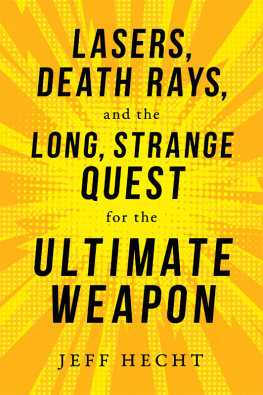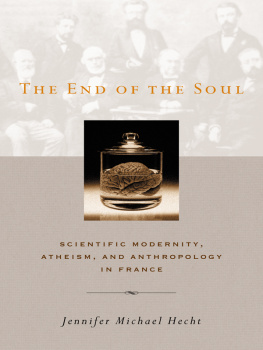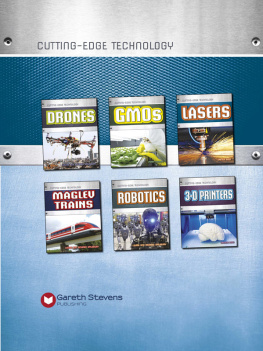
This book grew from the four decades that I have spent writing about lasers and laser weapons. It's been a fascinating adventure, and over those years many people have spent countless hours talking with me about lasers and laser weapons in person and on the phone. I can't list them all, but I can thank them all for their help, their time, and their friendship.
This book benefits from the work of other writers, and if you want to dig more deeply I can recommend some books I found particularly informative. For the early developments before the laser, I recommend William J. Fanning Jr.'s Death Rays and the Popular Media: 18761939, Jonathan Foster's The Death Ray: The Secret Life of Harry Grindell Matthews, and W. Bernard Carlson's Tesla: Inventor of the Electrical Age. I described the birth of the laser in Beam: The Race to Make the Laser, but to dig deeper you should read three narratives from different viewpointsNick Taylor's Laser: The Inventor, the Nobel Laureate and the Thirty-Year Patent War, Charles Townes's memoir How the Laser Happened, and Theodore H. Maiman's memoir The Laser Inventor. To understand ARPA's origins and early years, I recommend Sharon Weinberger's The Imagineers of War and Richard Barber's official history, The Advanced Research Projects Agency 19581974.
Robert Duffner's Airborne Laser: Bullets of Light gives an inside view of the Airborne Laser Laboratory, the most ambitious program of the early rocket-engine laser years from 1970 to the early 1980s, and shows the determination of military scientists and engineers to learn from tough challenges. Donald R. Baucom's The Origins of SDI: 19441983 and my 1984 book Beam Weapons (republished Beam Weapons: The Roots of Reagan's Star Wars) describe how the idea of space-based laser weapons originated.
Several books cast valuable light on the Reagan administration's controversial Star Wars program. Ben Bova's Assured Survival makes the case for strategic defense and tells some interesting stories. William J. Broad's Star Warriors profiles the young scientists behind the nuclear X-ray laser, and his Teller's War describes its downfall. Looking back from 2000, Frances FitzGerald's Way Out There in the Blue tells how Star Wars contributed to the end of the Cold War. Nigel Hey's The Star Wars Enigma takes a different view. For an inside view of the Strategic Defense Initiative I recommend Death Rays and Delusions by Gerald Yonas, SDI's first chief scientist, who has a keen eye for light moments as well as for serious implications.
The hundred-year archives of Aviation Week and Space Technology are the most extensive journalistic chronicles of laser weapon development I know; they are available online to subscribers. The New York Times archives lack as much technical detail but have a broader overview and some fascinating accounts of the death-ray development in the early twentieth century.
My research also drew heavily on interviews and notes from conferences that I attended over the years. Some interviews came from the excellent oral history archives of the Center for the History of Physics at the American Institute of Physics. Others came from my own archives of interviews conducted for news stories and earlier historical articles. Gordon Gould, William Culver, and Ronald Martin spoke with me in the past but had died before I began this book. I discussed the book with Jerry Pournelle, but he died suddenly before I could arrange an interview. I drew on past interviews with Robert Afzal, George Chapline, Stephen Jacobs, Ed Pogue, John Wachs, and Dan Wildt. Those I interviewed for this book included Ken Billman, Jack Daugherty, J. J. Ewing, Janet Fender, Ed Gerry, Doris Hamill, James Horkovich, Bill Krupke, Louis Marquet, Mark Neice, General Ellen Pawlikowski, Arati Prabhakar, Mike Perry, Howard Schlossberg, Bill Shiner, M. J. Soileau, and Hal Walker. My conference notes come from meetings conducted from the 1980s through 2017 when I attended the Conference on Lasers and Electro-Optics in San Jose.
Linda Greenspan Regan, then at Plenum Press, stimulated my interest in laser weapons when she asked me to write Beam Weapons in 1981 and worked with me on it through its publication. I also owe special thanks to Howard Rausch, who hired me to write for Laser Focus, and to other magazine editors whom I worked with over the years: Breck Hitz, Jim Cavuoto, Jeff Bairstow, Heather Messenger, Steve Anderson, Conard Holton, Paul Marks, Christina Folz, Stewart Wills, and Amy Nordrum.
I owe special thanks to my agent, Laura Wood of Fine Print Literary Management, for her advice on developing the book and her success in finding a home for it, and to my editor, Steven L. Mitchell at Prometheus Books, for seeing the book's potential and helping me to realize it. My friend and fellow photonics writer, Pat Daukantas, unearthed photos from long ago hidden in strange places to show what laser weapons really looked like. Thanks to Hanna Etu of Prometheus for helping with the publishing details that authors tend to overlook, and to Jeffrey Curry for careful, thoughtful, and helpful copyediting.
Last, but far from least, I am very pleased to thank the Alfred P. Sloan Foundation for a generous grant supporting my research and writing of this book.

Ancient myths armed powerful gods with death rays. The long list of thunder gods on Wikipediathe unruly mirror of our culturecovers the globe and history, ranging from Zeus, the king of the Greek gods, to heavy metal musician Gene Simmons, whose trademark song for KISS is God of Thunder. The ancients didn't understand the nature of lightning, but they knew and feared it. To them, lightning was the first directed-energy weapon, hurled by the gods to smite the evil, the unworthy, or those who had annoyed them. The flash of light came first, and if the strike was close, the bang and an explosive burst of energy followed almost instantly, shattering and igniting trees and killing people.
Lightning follows a zigzag path across the sky. A laser beam is an unerringly straight line through the air. Both are directed energy, but nature directs electricity differently than light. Death rays are modern myths, updated versions of the mythic bolts hurled by mythic ancient gods, born more than a century ago at a time when scientists were puzzling over new discoveries from X-rays to radio waves, inventors were seeking new weapons of war, and storytellers were looking for thrilling new ways to entertain their audiences.
The laser is a newcomer, invented in 1960 by Theodore Maiman, a young physicist who built on Albert Einstein's new physics and the work of others. He had high hopes for uses of his new discovery in research, communications, industry, and medicine when he announced it at a Manhattan press conference. But he was dismayed after he returned home to Los Angeles to find that newspaper headlines were mostly variations on LA Man Discovers Science Fiction Death Ray. This chapter tells the origins of the death-ray myth that waited for Maiman's new invention.
ARCHIMEDES AND THE BURNING MIRRORS
The oldest and most intriguing tale of using light as a weapon involves Archimedes, a legendary figure often considered the greatest mathematician and engineer of ancient times. He lived in Syracuse, a Greek city in what is now Sicily, at a time when Rome was expanding its power. When the Romans began threatening Syracuse in 215 BCE, Archimedes designed a series of war engines that used catapults, Greek fire, and other mechanisms to fend them off. Also he is said to have orchestrated the use of a large array of mirrors to focus sunlight onto Roman ships in the harbor, igniting them and saving Syracuse. Yet Archimedes failed to find an ultimate weapon to stop the siege, and the Romans sacked the city in 212 BCE, with Archimedes among the casualties.
Next page














